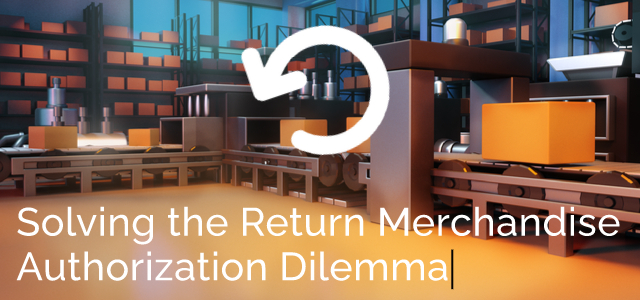Solving the Return Merchandise Authorization Dilemma
Estimated reading time: 3 minutes
A Return Merchandise Authorization (RMA) is a process that businesses use to process returned products or inventory. The RMA process makes it easy to keep track of returns, inventory, and finances.
Here is a possible RMA scenario: Sally is dissatisfied with a product and wants to return it for a refund, replacement, or repair. The RMA process begins when Sally contacts the business and requests an RMA number. The business then issues Sally an RMA number and instructions on how to return the product.
Once the product is returned, the business will inspect it to determine the reason for the return. If the product is defective, the business will repair or replace it for Sally. And if the product is not defective, the business may issue her a refund or store credit.
RMAs are an important part of any business’s return policy. By having a clear and easy-to-follow RMA process, businesses can avoid customer frustration and ensure that returns are processed quickly and efficiently.
Benefits of Implementing an RMA Process
There are a number of benefits to using an RMA process, including:
- Processing returns faster Improves customer satisfaction. A clear and easy-to-follow RMA process can help to improve customer satisfaction by reducing the amount of time and effort required to return a product.
- Streamlining RMS reduced costs. An efficient RMA process can help to reduce the costs associated with returns, such as shipping costs, labor costs, and inventory costs.
- Improved return tracking increases control of inventory levels. An effective RMA process can help businesses to improve their inventory management by tracking the number of returns and the reasons for returns. This information can be used to identify trends and make better decisions about inventory levels.
- Positive customer experiences increase loyalty. A positive customer experience can lead to increased sales. By providing a clear and easy-to-follow RMA process, businesses can create a positive customer experience and encourage repeat business.
Salesforce Helps Businesses Solve the RMA Dilemma
As you might expect from Salesforce, they offer functionality with one of their tools to support the RMA process, ensuring effective management of returns and customer satisfaction. Salesforce Order Management is a central hub for handling all aspects of the order lifecycle, including order capture, fulfillment, shipping, payment processing, service, and the RMA process, which enables businesses to create return orders, authorize returns, manage inventory, process refunds, and track returns in a centralized system.
Summary
An RMA process is an important part of any business’s return policy. By having a clear and easy-to-follow RMA process, businesses can avoid customer frustration and ensure that returns are processed quickly and efficiently. As outlined above, part of what Salesforce’s Order Management does is help businesses manage their RMA process. By using this tool, businesses can improve their RMA process and reduce the costs associated with returns.
How AdVic Can Help
Is your business looking for a way to solve its RMA issues? Reach out to AdVic® today and we’ll quickly devise and implement the right seamless system that ensures a solid foundation for future functionality and growth, plus an exceptional customer experience.
Related Resources:
Getting to Know the Power of Salesforce Order Management
Transfer the Customer Experience with Great Order Management
Subscribe to the AdVic Salesforce Blog on Feedly:



